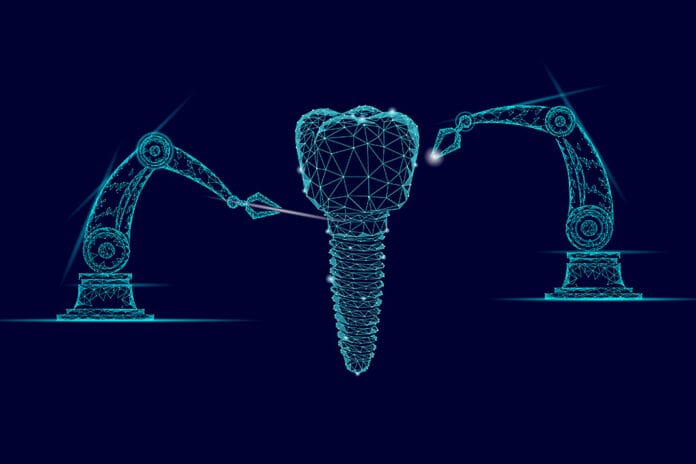Researchers at the University of Pennsylvania have developed a smart dental implant. The implant will resist bacterial growth and generate electricity from its piezoelectric qualities. The electricity could power a light for phototherapy that will protect periodontal tissue from inflammation and disease.
The Smart Dental Implant
Millions of Americans have dental implants, which replace missing teeth due to decay, injury, or periodontal disease. By design, an implant should last twenty or more years with a much more secure fitting than dentures or bridges.
Implants don’t always live up to their intended purpose and may need replacement in five or ten years. The replacement may be due to periodontal disease or inflammation that forces the patient to repeat the implant process.
An assistant professor at the University of Pennsylvania School of Dental Medicine, Geelsu Hwang, said that they wanted to address the issue. So they came up with an innovative and novel implant. Professor Geelsu has an engineering background that comes in handy in researching oral health issues.
Features of the Smart Dental Implant
The implant features two new technologies: a nanoparticle-infused biofilm material that resists bacterial growth. The other is an embedded light source that provides phototherapy. The light draws power from motion like brushing teeth or chewing and promotes periodontal health of the surrounding tissue.
“Phototherapy can address a diverse set of health issues,” stated Hwang. “But once you have a biomaterial implanted, it’s not practical to replace or recharge a battery. We are using a piezoelectric material, which can generate electrical power from natural oral motions to supply a light that can conduct phototherapy, and we find that it can successfully protect gingival tissue from bacterial challenges.”
This technology earned the University of Pennsylvania a position as a finalist in the Science Center research accelerator program.
Its pioneers aimed to fight bacteria, which is the main root of implant failure. Bacterial biofilms that build on the implants impact them negatively and cause them to fail. The BTO nanoparticles in the implants lead to the implant having a negative surface charge which repels bacteria.
Tests Done
The researchers have done tests on the implants using the major dental plaque component- Streptococcus mutans. The tests revealed that the implants minimize biofilm formation. Dr. Hwang said via a UPenn press release that they wanted to use an implant material that could resist all bacterial growth for a longer time because bacteria is not a one-off threat.
The power generating properties of the material were constant. Over time and many tests later, it did not leach. It also proved to have mechanical strength and did not harm the gingival tissue. It proves that we can safely use technology with zero ill effects.
Earlier studies had indicated that BTO might eliminate bacteria via reactive oxygen species generated by electric polarization reactions. Hwang and his team realized this was not true because these approaches had short efficacy. The negative charge repelling the bacteria would not last long.
In a paper in the ACS Applied Materials and Interfaces and the Advanced Healthcare Materials journals, Hwang and his team laid out the platform that could one day help in dental implants and other technologies like joint replacement technology.
The smart dental implant is to be commercialized as it needs further development and research. Hwang and his team hope to keep on doing more research to refine the smart implant system. They will continue to test new materials and try asymmetric properties that will encourage tissue integration.
Before you leave, check out the Today’s RDH self-study CE courses. All courses are peer-reviewed and non-sponsored to focus solely on high-quality education. Click here now.











